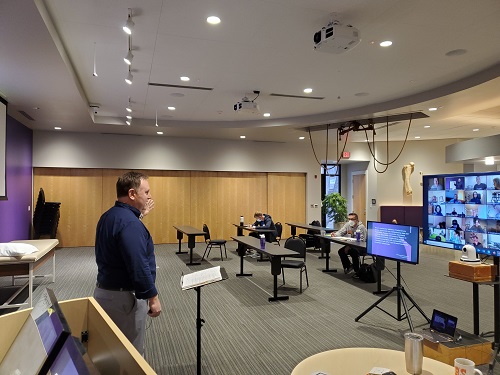"The new normal." That’s a phrase we all have heard many times during the last 10 months. As we are all adjusting to what that phrase means to us individually on a personal level, all of us are adjusting to what that means with regards to our relationships with each other as well. We are all finding new boundaries, and freedoms, associated with this "new normal."
PRI opened the 2021 year with the newly revamped Impingement and Instability course, which introduces the concept that impingement and instability are both necessary and vital for optimal human performance. They provide new boundaries and freedoms that allow us to be able to oscillate between our two hemispheres of our body and brain. Our body needs to find a "new normal" with these new parameters in order to appreciate the left side of our body and the right hemisphere of our brain. As I reminded the course attendees, the question isn’t "are you going to get onto your left leg?", the question is "how are you going to get onto your left leg?"
This upgraded course introduces the neuromechanical concepts to answer the question of "how", as this course serves as a gateway into the other PRI Secondary and Tertiary courses, such as Forward Locomotor Movement. This is the material Ron was looking to introduce 20 years ago, and it is my honor to be able to help provide the neurological answers to the question "how are you going to get onto your left leg?" As we discussed during the entirety of the weekend, the how is rooted in one’s ability to compress, or impinge, certain areas of the body, and decompress, or destabilize, other areas of the body. In order for the brain to appreciate these novel concepts, we need to provide the cortex of the brain with novel reference centers for proper inhibition of functional cortical dominance.


As we embarked on our "new normal, " not only in 2021, but in our cerebral cortical function, this course has now become much less of the orthopedic course it had to be several years ago, but has progressed into the neuromechanical blueprint for behavior modification that Ron had intended from Day 1 of the Institute. This course has always been my personal favorite of all the PRI courses offered because it is a clinician’s course as it provided me a more integrated manner to apply the information I had learned in the three PRI introductory courses. My appreciation for this course has grown dramatically due to the necessary evolution from an orthopedic delivery to a neuromechanical, cohesive, and expansive delivery of PRI concepts. As the attendees of the course can attest to, Impingement and Instability helps our body’s ability to appreciate the "new normal" from the inside out.


